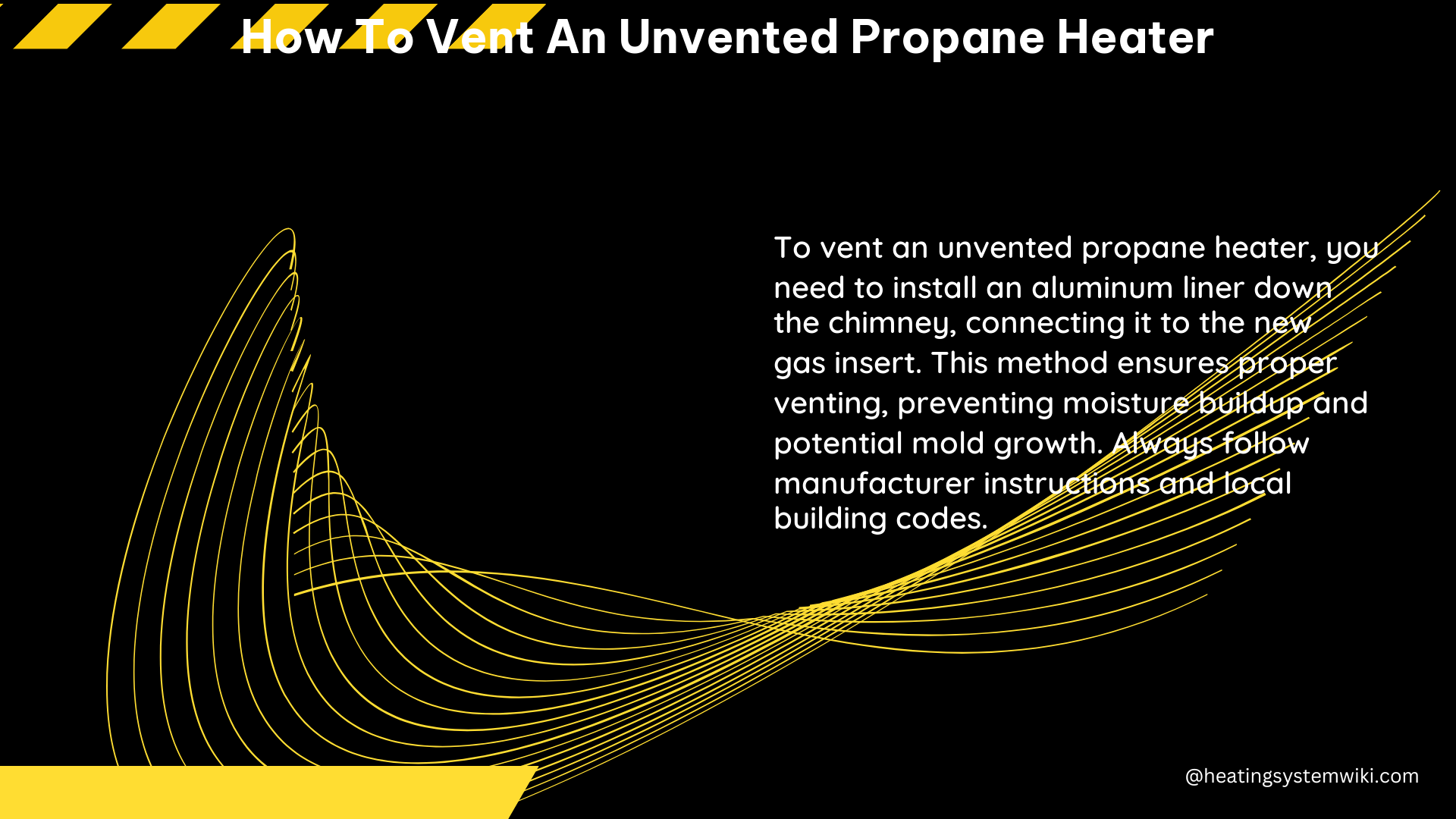Unvented propane heaters are a popular choice for supplemental heating in homes, cabins, and workshops, but they can pose a serious safety risk if not properly installed and maintained. To mitigate the risks associated with these heaters, it is essential to install a venting system that allows the combustion gases to safely exit the building. This comprehensive guide will walk you through the step-by-step process of venting an unvented propane heater, providing you with the technical specifications, DIY tips, and safety considerations to ensure a successful and safe installation.
Choosing the Vent Pipe Location
The first step in venting an unvented propane heater is to select the appropriate location for the vent pipe. The vent pipe should exit the building through a wall or roof in a location that is easily accessible and does not interfere with any other building systems, such as electrical wiring, plumbing, or structural elements.
When choosing the vent pipe location, consider the following factors:
- Proximity to the heater: The vent pipe should be as short and direct as possible, minimizing the number of bends and elbows to ensure optimal airflow.
- Accessibility: The vent pipe should be located in an area that is easily accessible for inspection, maintenance, and potential repairs.
- Clearance from combustible materials: The vent pipe should be positioned with a minimum clearance of 6 inches from any combustible materials, such as wood framing or insulation.
- Compliance with local building codes: Ensure that the vent pipe location and installation comply with all relevant local building codes and regulations.
Installing the Vent Pipe

Once the location for the vent pipe has been determined, the next step is to install the pipe itself. The vent pipe should be made of a material that is approved by the heater manufacturer, such as stainless steel or aluminum. The pipe should be installed according to the manufacturer’s instructions, using the appropriate fittings and connectors.
When installing the vent pipe, consider the following technical specifications:
- Vent pipe diameter: The diameter of the vent pipe will depend on the specific model of the unvented propane heater. Consult the manufacturer’s instructions or specifications to determine the appropriate pipe size, which typically ranges from 3 inches to 6 inches in diameter.
- Vent pipe length: The length of the vent pipe will depend on the distance between the heater and the outside vent location. Longer vent pipes may require additional support or bracing to prevent sagging or damage.
- Vent pipe fittings: Use the appropriate fittings, such as elbows, tees, and adapters, to ensure a secure and airtight connection between the heater and the outside vent.
- Vent pipe material: Stainless steel or aluminum vent pipes are recommended for their durability and resistance to corrosion. Avoid using PVC or other plastic materials, as they may not be suitable for the high temperatures generated by the heater.
Sealing the Vent Pipe Opening
Once the vent pipe has been installed, the opening in the wall or roof where the pipe exits the building must be sealed to prevent air and water infiltration. Use a high-quality, weatherproof sealant, such as silicone or acrylic caulk, to create a tight seal around the vent pipe.
When sealing the vent pipe opening, consider the following:
- Sealant type: Choose a sealant that is specifically designed for outdoor use and can withstand the temperature fluctuations and weathering conditions to which the vent pipe will be exposed.
- Sealant application: Apply the sealant in a continuous bead around the vent pipe, ensuring that the entire opening is covered and sealed.
- Sealant curing time: Allow the sealant to fully cure according to the manufacturer’s instructions before operating the heater.
Testing the Venting System
After the vent pipe has been installed and the opening has been sealed, it is essential to test the venting system to ensure that it is functioning properly. This can be done by lighting the heater and observing the combustion gases exiting the vent pipe.
When testing the venting system, consider the following:
- Combustion gas flow: Observe the flow of the combustion gases to ensure that they are exiting the vent pipe smoothly and without any obstructions or backflow.
- Vent pipe temperature: Check the temperature of the vent pipe to ensure that it is not excessively hot, which could indicate a problem with the venting system.
- Vent pipe integrity: Inspect the vent pipe for any signs of damage, such as cracks, holes, or loose connections, which could compromise the venting system.
If you encounter any issues during the testing process, consult the heater manufacturer’s instructions or contact a professional HVAC technician for further assistance.
Safety Considerations
It is important to note that some unvented propane heaters are not designed to be vented, and attempting to vent them can be dangerous. If you are unsure whether your heater can be vented, consult the manufacturer’s instructions or contact a professional HVAC technician.
Additionally, it is crucial to follow all safety guidelines and local building codes when venting an unvented propane heater. Improper installation or maintenance of the venting system can lead to the release of harmful combustion gases, posing a serious health and fire hazard.
Conclusion
Venting an unvented propane heater is a critical step in ensuring the safe and efficient operation of these heating appliances. By following the step-by-step instructions and technical specifications outlined in this guide, you can successfully install a venting system that allows the combustion gases to safely exit your building. Remember to always consult the manufacturer’s instructions, comply with local building codes, and seek the assistance of a professional HVAC technician if you have any doubts or concerns about the venting process.
